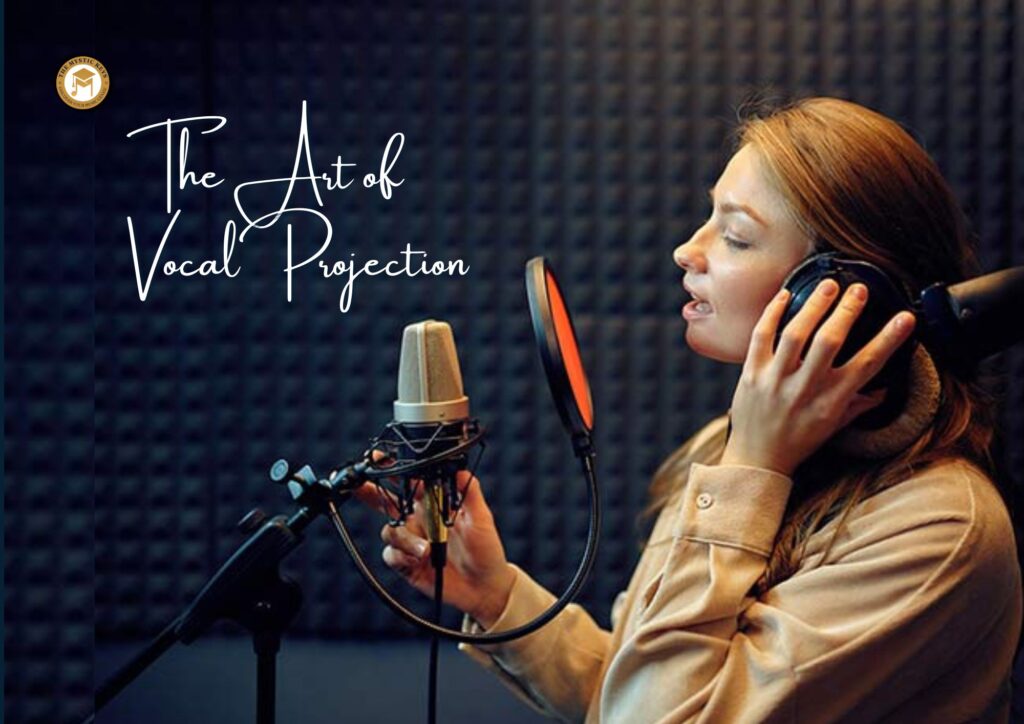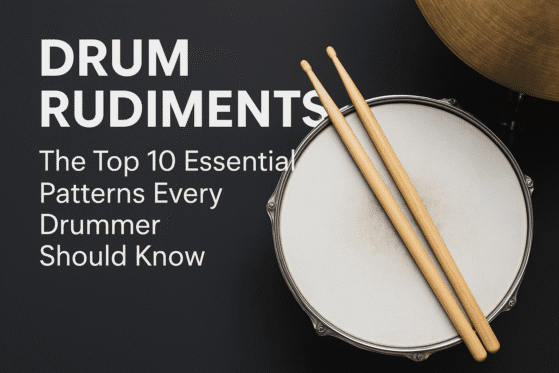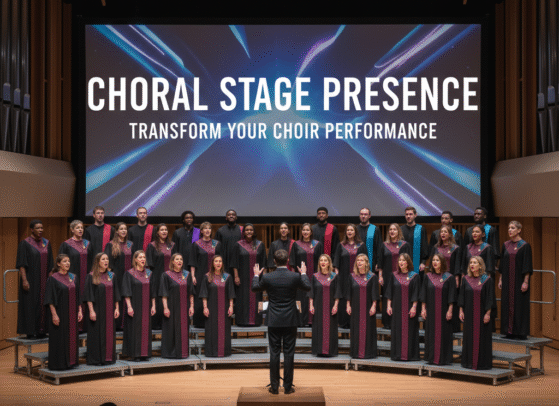The Art of Vocal Projection | Sing Louder Without Straining
The Art of Vocal Projection is one of the most essential skills for any singer, whether you’re performing on a stage, recording in a studio, or delivering a heartfelt speech. It’s the ability to sing or speak clearly and powerfully without putting undue strain on your voice. While some singers are naturally loud or have a strong presence, others struggle with how to project their voices properly. This challenge often leads to vocal strain, tiredness, or even injury. However, with the right techniques and understanding, anyone can learn to sing louder and more powerfully without damaging their vocal cords.

Understanding Vocal Projection
Vocal projection is the ability to send your voice across a room or to fill an entire auditorium without forcing or yelling. It’s not about shouting or straining the voice, but rather, about creating a sound that resonates clearly through your chest, throat, and head. When done properly, vocal projection feels effortless, but it requires a deep understanding of how your voice works and how to use the body’s natural resonating chambers to amplify sound.

The Importance of Breath Support
One of the most common misconceptions about vocal projection is that it’s all about volume. In reality, volume comes from a combination of breath support and proper technique. Without proper breath support, you risk pushing your voice too hard, which can result in fatigue and damage.
Breathing is the foundation of vocal projection. Think of your lungs as a balloon that fills with air. As you breathe in, the diaphragm (the muscle below your lungs) should expand, creating more room for air. The air needs to be controlled as you sing, and this control is crucial for vocal power.
When you engage your diaphragm, you increase the airflow into your vocal cords. This support allows you to sing louder without straining. It’s important to avoid shallow chest breathing, as it can make your voice feel weak and disconnected. Instead, practice breathing deeply from your diaphragm, filling your abdomen with air, not just your chest.

Posture and Alignment
Good posture is key when it comes to vocal projection. If you’re hunched over or leaning forward, you limit the space that air can flow through. Think of your body as a musical instrument — a clear, resonating sound can only happen if your instrument is aligned properly.
When you stand or sit, make sure that your spine is straight and your shoulders are relaxed. Imagine a string pulling the top of your head upward to lengthen your neck and improve airflow. Keeping your neck and throat relaxed allows for better sound production. A tight throat, caused by poor posture or tension, leads to weak projection and vocal strain.

Resonance | Finding Your Natural Voice
Vocal resonance is the way sound waves bounce off the chambers of your head and chest. When you sing, your voice vibrates in different parts of your body. You want to create a sound that resonates in these areas to produce a full, clear tone.
To find your natural resonance, experiment with different sounds and notice where you feel vibrations. You may feel them in your chest, mouth, or head. The chest voice often produces a fuller, warmer sound, while the head voice can create a lighter, higher sound.
Try humming at different pitches, and pay attention to the sensations in your face and chest. The goal is to create a balance between the resonance of your chest and your head. This combined sound will give your voice more presence, and you’ll be able to project without force.

Vocal Warm-Ups | Preparing the Voice
Before you even think about singing at full volume, it’s essential to warm up your vocal cords. Just as an athlete stretches before a workout, your voice needs to be prepared to perform at its best.
Some excellent vocal warm-ups for projection include:
Lip Trills: Gently blow air through closed lips while making a pitch. This engages your vocal cords without strain.
Humming: Start humming in a low pitch, then gradually work up to higher notes. This warms up both the chest and head voice.
Scales: Sing scales from low to high, focusing on evenness in sound. This helps to engage your breath support and encourage smooth transitions between different vocal registers.
Remember, vocal warm-ups should never cause discomfort. If you feel any strain, stop immediately and reassess your technique.
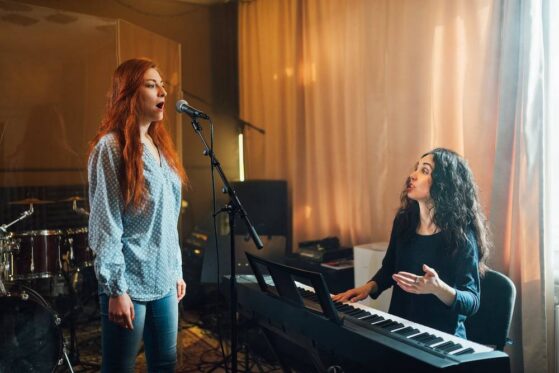
The Power of Vowel Modification
One of the keys to mastering the Art of Vocal Projection is vowel modification. As you ascend to higher pitches, your voice may start to thin out or sound weak. To combat this, you can modify the shape of the vowels you sing to create a fuller sound.
For example, the vowel “ah” becomes a more open sound as you move higher. Instead of straining to hit a high note with a sharp “ee,” try modifying it into an “ay” or “eh” sound. This allows your voice to project with more power, avoiding the strain that typically accompanies higher notes. Vowel modification not only helps with strength but also enhances vocal clarity, making it easier to project across a room. Mastering this technique will bring consistency and ease to your high-range performances.

Strengthening Your Voice with Vocal Exercises
Just like any other muscle, your vocal cords need regular exercise to grow stronger. Consistent practice will improve your vocal strength and projection over time. Try these exercises to build vocal stamina:
-
Siren Sounds: Glide through your range like a siren, starting at a low note and gradually sliding up to the highest pitch you can comfortably reach. This will strengthen your vocal cords and improve your ability to sustain long notes.
-
Sustain a Note: Choose a note and hold it for as long as possible while maintaining a steady pitch. This challenges your breath support and stamina.
-
Pitch Matching: Have someone play a note on an instrument, and match that pitch with your voice. Gradually move up and down the scale. This builds your control over pitch and tone.

Relaxation: Avoiding Tension
Tension is the enemy of vocal projection. It’s natural to feel nervous before a performance or rehearsal, but if you tense up, your voice will suffer. Stress and tension in your neck, throat, and jaw will limit your vocal range and make it difficult to project.
Before singing, take a few moments to relax. Stretch your neck, massage your jaw, and release any tension in your shoulders. A relaxed body and mind will lead to smoother, more controlled singing. You can also practice deep breathing exercises to calm any nerves and ensure you have full breath support. This relaxation helps create a free flow of sound and allows your voice to shine through without restriction. Make relaxation a habit, and your vocal projection will improve dramatically.
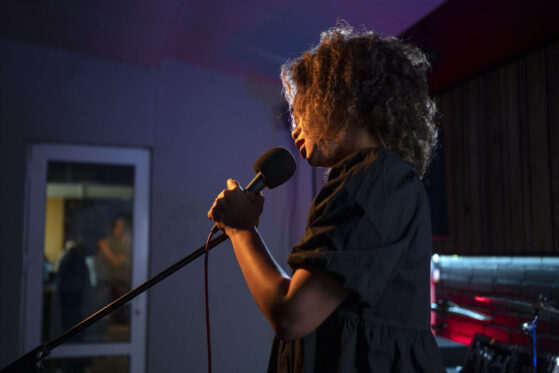
Using Your Body as a Resonator
Your body is a natural amplifier for sound. When you sing, you should feel the vibrations resonate through your chest, face, and even your head. This natural resonance adds volume without causing strain.
As you sing, focus on feeling the vibrations in different parts of your body. If you sing from your chest, you’ll feel the vibrations around your ribs. As you sing higher notes, the vibrations will move up into your face and forehead. This creates a fuller, more dynamic sound that travels further.

Practicing Consistently
Vocal projection is a skill that requires ongoing practice. The more you work on your breath support, resonance, and vocal strength, the easier it will be to project your voice effectively. Art of Vocal Projection is not about pushing harder but about using technique and consistency to build control. Set aside time each day to practice proper vocal techniques, and be patient with yourself. It takes time for your body to learn how to project your voice without strain, but with consistent practice, you’ll see improvement.
Listen to your body and avoid forcing your voice beyond its comfort zone. Regular warm-ups and mindful breathing can go a long way in protecting your vocal health. With dedication, your voice will carry strength, clarity, and confidence in every performance.
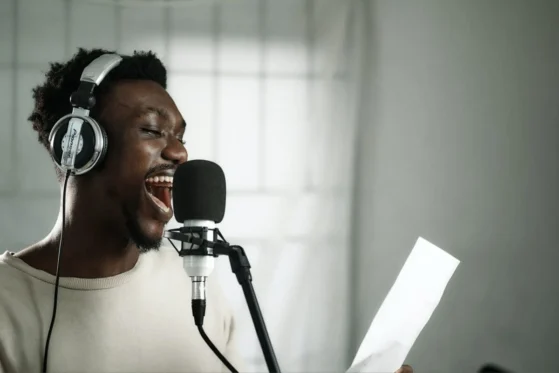
Conclusion
The Art of Vocal Projection is a powerful tool in any singer’s repertoire, but it doesn’t come from force or yelling. Instead, it’s about using your body efficiently, breathing properly, and practicing techniques that allow your voice to resonate naturally. By focusing on breath support, posture, resonance, and relaxation, you can develop a powerful, clear voice that can fill any space without causing strain.
Remember, vocal projection is not just about volume—it’s about creating a sound that resonates clearly and effectively. Whether you’re singing in a small room or on a grand stage, the key is to project with control, confidence, and comfort. Ready to master this skill? Join The Mystic Keys – Western Vocal Lessons Online and start building a stronger, louder, and more expressive voice without the strain!
Related Blogs
Weak Vocals? Here’s What You
Need to Know
Experiencing weak vocals can be a significant setback, especially for those who rely on their voice for singing or public speaking. Whether you’re a professional singer, an aspiring vocalist, or someone who loves karaoke, dealing with a voice that lacks power and resonance can be frustrating.
A Beginner’s Guide to Learning
Music Online
In today’s digital world, learning music has become more accessible than ever before. Whether you’ve always been interested in music but never had the chance to pursue it, or you’re looking to build on your existing skills, online music lessons provide incredible opportunities.
Why The Mystic Keys is the Best Choice for Beginner Music Learners
When starting your music education, it is crucial to choose the right platform that supports and nurtures your development. The Mystic Keys stands out as the Best Choice for Beginner Music Learners because it provides a personalized, structured, and engaging approach.


